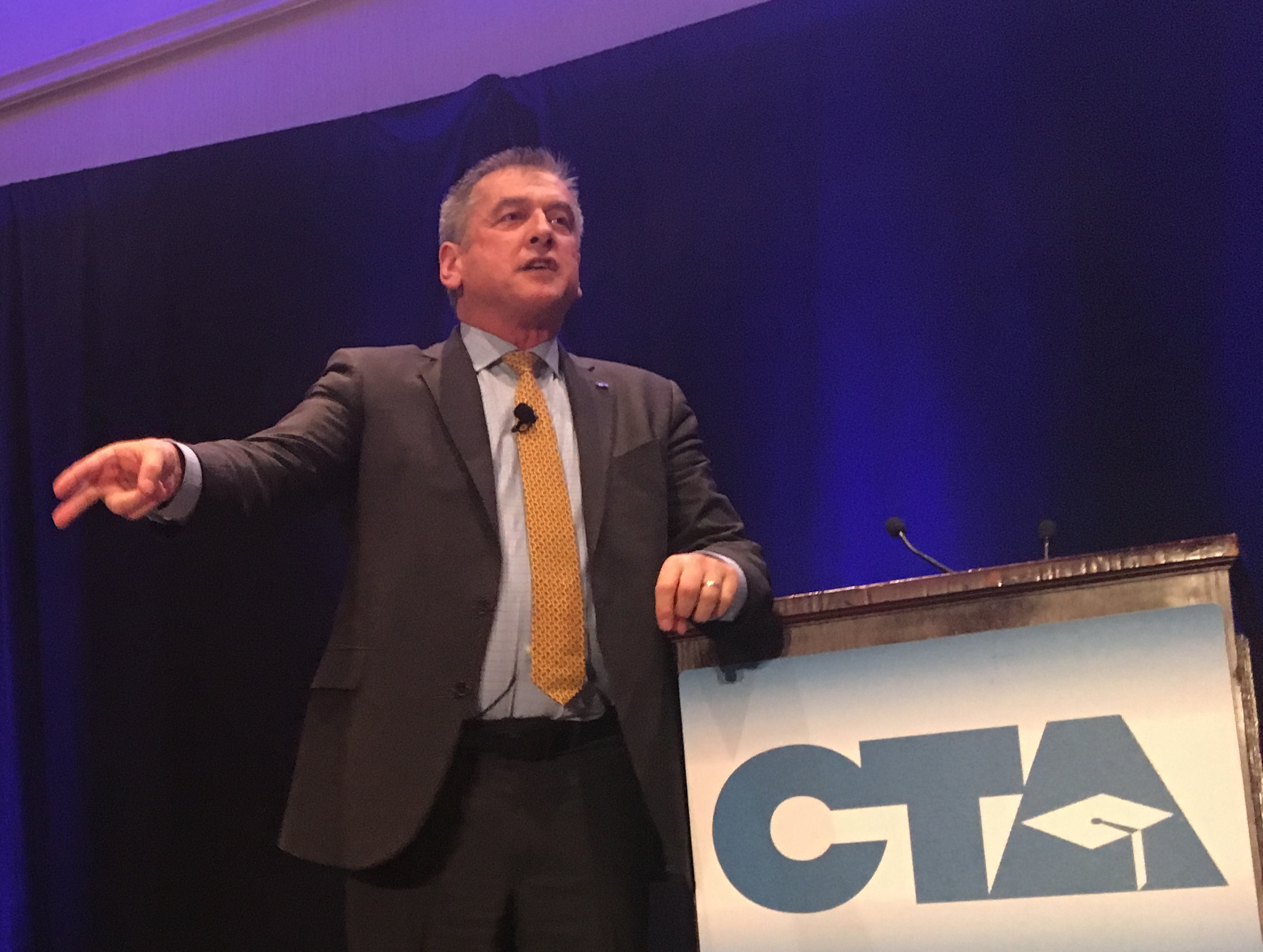By Eric Heins, CTA President
Every day in thousands of California classrooms, CTA members guide young minds, maintain discipline, develop and follow careful plans, and inspire and motivate others to achieve. Teachers are inherently leaders. Their leadership skills don’t just apply to working with students; teachers are better qualified than anyone else to be the driving force behind education change.
CTA has long recognized not only the potential, but the desire and responsibility our members have to lead the profession. Unfortunately, over the years, that desire has often been thwarted by people who have not set foot in a classroom since they graduated, but who believe they know what’s best for students and how we do our jobs. Ask almost any veteran teacher and they will tell you, often with justifiable cynicism, of the latest and greatest education fad that has come and gone, or legislation affecting education that’s been passed with little or no respect for the input of actual educators.

Eric Heins speaks at CTA’s Region I Leadership Conference in September.
When CTA launched its long-term strategic plan nearly four years ago, tapping into and building upon the natural leadership skills of our members was a key component. Transforming our profession, advocating for education reform, and developing leadership to build a stronger union have all become top priorities since the plan’s adoption.
Among the efforts I’m proudest of is CTA’s partnership with Stanford University to form the Instructional Leadership Corps. This truly exciting collaboration is helping teachers train teachers and is already making professional development more meaningful and relevant for thousands of educators around the state. I firmly believe teacher-led PD is far better for both students and teachers than relying on “drive-by” consultants who come in for a workshop or two, impart some new (or not so new) ideas and strategies, and then leave, never to be heard from again.
CTA members are also rising to the occasion as leaders advocating in their districts for best use of the Local Control Funding Formula (LCFF) and implementation of the district’s Local Control Accountability Plan (LCAP). Not only have educators become key voices in the development of those plans, but they have been the ones reaching out to parents and the community, educating them about the LCAP, and encouraging parent and community representatives to participate fully in the LCAP process. This leadership is changing the old dynamic of district committees and their cherry-picked-by-administrators parent members just being rubber stamps for whatever the administration wants to do, including setting district budget priorities.
“I encourage you to be a leader outside as well as inside the classroom.”
We’ve seen CTA members standing up for the rights of Dreamers facing threats to their immigration status, advocating for affordable college for all, and working to ensure adequate school funding, access to preschool, and a quality education for every student regardless of their ZIP code, along with other important goals of CTA’s Advocacy Agenda.
I encourage you to be a leader outside as well as inside the classroom. You already have the skills, and you almost certainly have much to contribute. Get involved in your local chapter. Attend CTA conferences. Share your ideas with colleagues. Reach out to parents and community. No one knows better than you what’s best for your students — let’s put that knowledge and the leadership skills that go with it to good use.
A New Look for the Advocacy Agenda
Just in time for parent-teacher conferences, CTA’s Advocacy Agenda — 10 initiatives that lead to “the public education all California students deserve” — is now a snappy online infographic easily shareable on social media. The agenda, based on education research, was created with the input and expertise of thousands of educators across the state.

The Discussion 0 comments Post a Comment